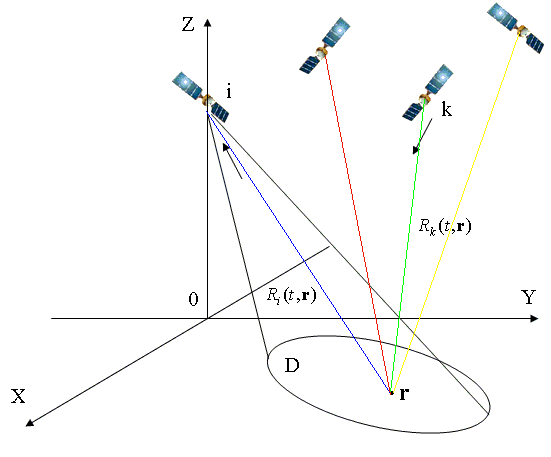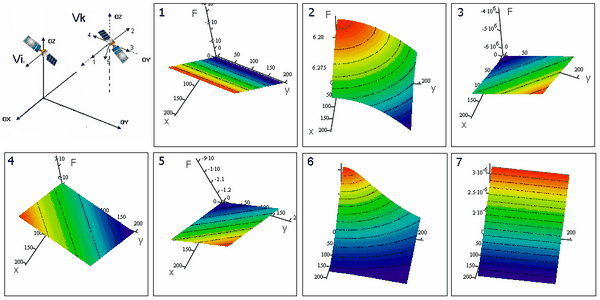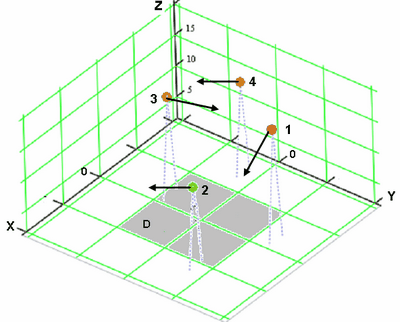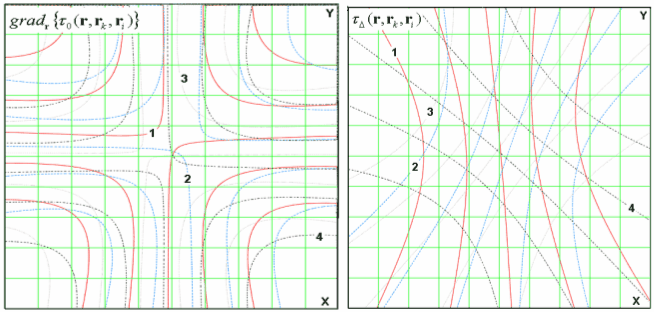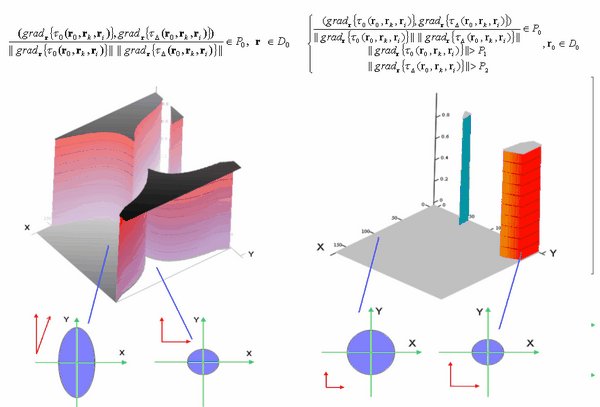|
|
Multiposition Synthetic Aperture Radar (MPSAR) Alexander V Ksendzuk |
| Main Page |
3. Multiposition SAR. Geometry.
As we can
see from
Figure 3.1. Time delay in arbitrary bistatic pair in MPSAR. |
| Signal Model | |
| Geometry | |
| Optimal Signal Processing | |
| Object detection | |
| Multiposition SAR interferometer | |
| Pseudonoise signals in remote sensing systems | |
| Pseudo-passive SAR | |
| Remote sensing systems modeling principles | |
| About Author | |
| Links | |
|
For further investigation it is useful to separate time delay
into
constant
where
Analysis of
(3.3), (3.4) allows to investigate Doppler frequency of the signal in bistatic
pair
Behavior of the Doppler frequency shift as spatial function are shown in Figure 3.2.
Figure 3.2. Doppler frequency as the space functions of the relative receiver/transmitter velocity.
Dependence
of the
Analysis of the field of average
delays
Analysis of the
Fundamental advantage of the optimization in comparison with �direct analysis of the space ambiguity functions (point target responses)� is ultimate speed. For this example proposed Gradient Optimization takes 50 seconds and optimization based on space ambiguity function analysis takes 56 days! An example of the optimal selection of the radar scene (footprint of the transmitters/receivers antennas intersection) for the multiposition synthetic aperture radar, spatial configuration (attitude and velocity vector are given) is shown in the Fig. 3.3.
Figure 3.3. Spatial configuration of the MPSAR to be optimized.
Figure 3.4. Fields
Figure 3.5. Optimization based on absolute gradient values allows to select area with good resolution in azimuth and/or range
Figure 3.6. Optimization based on angle between gradients allows to select zone where shape of the high resolution zone is given and with usage of absolute gradient values- shape and area of the high resolution zone are given Conclusion Investigation of the geometry of the multiposition SAR is necessary step to understand signal structure. Based on this analysis proposed gradient analysis allows to select best constellation in case of multiposition SAR or to select the best relative position and velocity in bistatic SAR which provides maximal resolution in given direction (directions) and/or maximal interval of the unambiguity measurements. Ultimate advantage of the proposed gradient optimization method is characterizes by little computation costs. This gives possibility to use this analysis in the on-board remote sensing systems.
|
|
e-mail to author: Alexander V Ksendzuk |

